Unveil stunning aerial images with the best Photography Drones for real estate and beyond. Discover the art of Drone Photography.
In recent years, the world of Photography Genres has been modernized by the arrival of Drone Photography. These Drones also known as Aerial Vehicles have opened up a whole new perspective, quite literally, for photographers, enthusiasts, and professionals alike. With the ability to capture stunning Aerial Shots from vantage points previously inaccessible, Drone Photography has soared in popularity.
What is Drone Photography?
Drone Photography involves using unmanned aerial vehicles equipped with cameras to capture images from the sky. These drones are controlled remotely by operators on the ground, allowing them to navigate and capture breathtaking aerial perspectives.
How does Drone Photography work?
Drone Photography works by attaching a camera to a drone and controlling its flight path using a remote controller or smartphone app. The operator can adjust the altitude, angle, and position of the drone to capture the desired shots. Some advanced drones also feature built-in cameras with high-resolution capabilities
Key Features & Considerations for Drone Photography
From breathtaking landscapes to captivating cityscapes, explore the endless possibilities of Aerial Photography. Learn how to master Drone Photography Techniques and create compelling visual narratives.”
Safety: Safety should always be the top priority when engaging in Drone photography. Pilots must follow regulations set forth by aviation authorities, such as maintaining line-of-sight with the drone, avoiding restricted airspace, and flying at safe altitudes. Additionally, conducting pre-flight checks and staying informed about weather conditions are crucial for safe and successful drone flights.
Camera Quality: The quality of the camera is crucial in drone photography. Look for drones equipped with high-resolution cameras, preferably with features like adjustable aperture, manual exposure control, and image stabilization for sharp and detailed images.
Composition: Just like traditional photography, composition plays a crucial role in Drone Photography. Consider the rule of thirds, leading lines, and framing to create visually engaging images. Experiment with different angles, heights, and perspectives to capture unique and compelling shots.
Lighting: The quality of light can make or break a Drone Photography. Golden hour, the time just after sunrise or before sunset, offers soft, warm light that enhances colors and textures. However, drones can also capture stunning imagery during other times of the day, so don’t hesitate to explore different lighting conditions and experiment with exposure settings.
Flight Environment: Assess the environment where you plan to fly your drone, taking note of any potential obstacles, hazards, or interference. Choose locations with plenty of open space and minimal distractions to ensure safe and uninterrupted flights. Be aware of power lines, trees, buildings, and other structures that could pose risks to your drone.
Battery Life: Consider the battery life of the drone, as it determines how long you can fly and capture images. Look for drones with longer battery life or consider purchasing extra batteries for extended shooting sessions.
Weather Conditions: Weather can have a significant impact on Drone Photography. Be mindful of wind, rain, fog, and other adverse weather conditions that could affect flight stability and image quality. Monitor weather forecasts and plan your flights during periods of favorable weather whenever possible.
Legal and Regulatory Compliance: Familiarize yourself with the laws and regulations governing drone operations in your area. This includes obtaining any necessary permits or licenses for commercial drone use and adhering to restrictions on flight altitude, airspace, and privacy. Stay informed about updates to regulations and ensure compliance with all applicable laws. Ethical Considerations in Photography…
Post-Processing: After capturing by Drone, take the time to edit and enhance them using editing software. Adjust colors, contrast, exposure, and sharpness to bring out the full potential of your images. But remember to keep edits subtle and natural-looking to maintain the authenticity of the scene.
Respect for Privacy and Environment: Respect the privacy of individuals and property when flying your drone. Avoid flying over private property without permission, and be mindful of sensitive areas such as wildlife habitats and protected environments. Minimize disturbances to wildlife and ecosystems, and follow ethical guidelines for responsible drone use.
Continuous Learning and Improvement: Drone Photography is a skill that takes time and practice to master. Continuously seek opportunities to learn and improve your skills, whether through online resources, workshops, or hands-on experience. Experiment with new techniques, explore different locations and challenge yourself to push the boundaries of your creativity.
Portability: Portability is essential, especially if you plan to travel with your drone. Choose a drone that is compact, lightweight, and easy to transport, without compromising on camera quality or flight performance.
Flight Performance: Opt for drones that offer stable flight performance and intuitive controls. Features like GPS positioning, obstacle avoidance, and intelligent flight modes can enhance your flying experience and help you capture smooth and precise shots.
In conclusion, Drone Photography represents a thrilling convergence of technology and artistry, offering enthusiasts and professionals alike the chance to explore the world from a fresh perspective. With its ability to capture stunning aerial views, overcome logistical barriers, and inspire creativity, Drone Photography has become an indispensable tool in the photographer’s arsenal.
Exploring the World: The Art of Aerial Photography
Aerial Photography is the art of capturing images from an elevated perspective, typically from an aircraft, drone, or other airborne platforms. It provides a unique viewpoint that allows photographers to capture landscapes, cityscapes, and natural wonders in ways that ground-based photography cannot. From majestic landscapes to urban skylines, aerial photography offers a fresh perspective on the world around us.
History of Aerial Photography
The origins of Aerial Photography can be traced back to the mid-19th century when photographers began experimenting with attaching cameras to balloons, kites, and even pigeons. In 1858, French photographer Gaspard-Félix Tournachon, known as Nadar, captured the first Aerial Photograph from a hot air balloon over Paris. Since then, advancements in aviation technology have made Aerial Photography more accessible and widespread.
Tips for Aerial Photography
Here are some tips for capturing great Aerial Photography:
- Plan your flights carefully and scout locations in advance.
- Pay attention to lighting conditions and choose the best time of day for shooting.
- Experiment with different perspectives and angles to create dynamic compositions such as exposure, ISO, and white balance, to achieve desired effects.
- Use manual camera settings to adjust exposure, focus, and white balance for optimal results.
- Practice flying your drone smoothly and confidently to capture steady footage.
- Keep an eye on weather conditions and avoid flying in strong winds or adverse weather.
- Practice smooth and controlled movements to capture steady footage and avoid jerky motions.
- Use the Rule of Thirds and leading lines to create visually compelling compositions.
Unveiling the Sky: A Guide to Photography Drones
Photography Drones, also known as unmanned aerial vehicles (UAVs), are remote-controlled aircraft equipped with high-resolution cameras. These drones are designed to capture images and videos from aerial perspectives, providing photographers with a versatile tool for creative expression and exploration.
Tips for Photography Drones Success:
- Plan Your Shots: Before flying your drone, plan your shots and scout locations to identify interesting compositions and vantage points.
- Check the Weather: Monitor weather conditions and avoid flying in strong winds, rain, or low visibility.
- Master Your Controls: Practice flying your drone in an open space to become familiar with its controls and maneuvering capabilities.
- Experiment with Angles: Explore different angles, heights, and perspectives to capture unique and compelling shots.
- Edit Your Images: After capturing drone photos, use editing software to enhance colors, adjust exposure, and crop your images for the best results.
Photography Drones offer photographers an exciting opportunity to capture stunning aerial images and videos from unique perspectives. By understanding the key features of photography drones, choosing the right model, and following essential tips for success, you can take your drone photography to new heights. Whether you’re capturing landscapes, events, or creative projects, Photography Drone empowers you to unleash your creativity and explore the world from above.
Exploring the Sky: Finding the Best Drone for Photography
In the realm of Drone Photography, choosing the right drone can make all the difference between capturing breathtaking images and falling short of your creative vision. With a myriad of options available on the market, finding the best drone for photography requires careful consideration of factors such as camera quality, flight performance, and overall reliability.
Let’s explore the world of drones and uncover the top contenders for capturing stunning Aerial Shots.
DJI Mavic 3

Camera: The DJI Mavic 3 boasts an impressive Hasselblad camera with a 20MP 1-inch CMOS sensor, capable of capturing stunning 5.1K video and 20MP stills. With advanced features such as 28x hybrid zoom and a 10-bit Dlog-M color profile, the Mavic 3 delivers unparalleled image quality and dynamic range.
Flight Performance: Equipped with advanced obstacle avoidance sensors and intelligent flight modes, the Mavic 3 offers smooth and stable flight performance in various conditions. Its extended flight time of up to 46 minutes ensures ample time to capture the perfect shot without interruption.
Key Features: ActiveTrack 5.0 for precise subject tracking, Omnidirectional Obstacle Sensing for enhanced safety, and Advanced Pilot Assistance System (APAS) 5.0 for automated obstacle avoidance.
Skydio 2

Camera: The Skydio 2 features a 12MP Sony sensor capable of shooting 4K video at 60fps and capturing stunning HDR photos. With its 3-axis gimbal stabilization and wide dynamic range, the Skydio 2 delivers smooth and cinematic aerial footage.
Flight Performance: Renowned for its autonomous flight capabilities, the Skydio 2 utilizes advanced AI technology to navigate complex environments and avoid obstacles seamlessly. Its powerful propulsion system and extended range make it ideal for capturing dynamic shots in challenging locations.
Key Features: Skydio Autonomy Engine for autonomous flight and obstacle avoidance, Beacon and Controller for enhanced control and tracking options, and Skydio Enterprise App for professional applications.
Autel Robotics Evo II pro

Camera: The Autel Robotics Evo II Pro features a 6K interchangeable gimbal camera with a 1-inch CMOS sensor, capable of capturing stunning aerial footage with superior clarity and detail. Its adjustable aperture and HDR capabilities ensure optimal image quality in diverse lighting conditions.
Flight Performance: With a flight time of up to 40 minutes and a maximum range of 9km, the Evo II Pro offers exceptional endurance and versatility for extended aerial photography sessions. Its robust build quality and intelligent flight modes make it suitable for professional-grade applications.
Key Features: Dynamic Track 2.0 for precise subject tracking, AI-enhanced obstacle avoidance, and Smart Controller with an integrated 3.3-inch OLED display for intuitive operation.
DJI Phantom 4 Pro

Camera: The DJI Phantom 4 Pro features a powerful 20-megapixel camera with a 1-inch CMOS sensor capable of shooting 4K video at 60 frames per second. Its mechanical shutter and aperture control ensure sharp and vibrant images even in challenging lighting conditions.
Flight Performance: With a maximum flight time of 30 minutes and a top speed of 45 mph, the Phantom 4 Pro offers exceptional stability and agility for capturing dynamic aerial shots. Its advanced obstacle sensing and intelligent flight modes make it suitable for both novice and experienced pilots.
Key Features: ActiveTrack for precise subject tracking, TapFly for automated flight control, and a robust OcuSync transmission system for real-time HD video transmission.
Parrot Anafi USA

Camera: The Parrot Anafi USA is equipped with a 32x zoom camera featuring a 21-megapixel Sony sensor capable of capturing 4K HDR video and 48-megapixel stills. Its stabilized gimbal ensures smooth and steady footage even at high zoom levels.
Flight Performance: Designed for professional applications, the Anafi USA offers a flight time of up to 32 minutes and a maximum range of 4 km. Its lightweight and foldable design makes it portable and easy to transport for on-the-go photography missions.
Key Features: Thermal imaging capability for aerial inspection and surveillance, Secure Digital Evidence (SDE) mode for encrypted data transmission, and a rugged design for durability in harsh environments.
In summary, selecting the Best Drone for Photography requires careful consideration of factors such as camera quality, flight performance, and overall suitability for your specific needs. Whether you’re a novice photographer or a seasoned professional, investing in the right drone can unlock endless creative possibilities and elevate your Aerial Photography to new heights.
“Sky High Sales: Elevating Real Estate Drone Photography”
In the competitive world of real estate, captivating imagery can make all the difference in attracting potential buyers and showcasing properties in their best light. With the rise of drone technology, real estate professionals are harnessing the power of aerial photography to offer prospective buyers a unique perspective and highlight the full potential of their listings. Let’s delve into the realm of Real Estate Drone Photography and explore its impact on property marketing.
Benefits of Real Estate Drone Photography
Aerial Perspectives
Drone Photography offers a bird’s-eye view of properties, allowing buyers to see the layout, size, and features of a property about its surroundings. This helps convey the property’s unique selling points and enhances its appeal to potential buyers.
Enhanced Marketing
High-quality aerial imagery captured by drones can significantly enhance marketing materials such as property listings, brochures, and websites. Eye-catching aerial photos and videos grab the attention of buyers and set listings apart from the competition.
Showcasing Features
Drones can capture unique features of a property, such as landscaped gardens, swimming pools, and outdoor amenities, in a way that ground-based photography cannot. This allows buyers to appreciate the full scope of what a property has to offer.
Engaging Content
Aerial videos provide an immersive experience for potential buyers, allowing them to explore properties as if they were there in person. This engaging content helps keep viewers interested and encourages them to inquire further about the property.
In conclusion, Real Estate Drone Photography offers a powerful tool for marketing properties and capturing the attention of potential buyers. By leveraging the unique perspective provided by drones, real estate professionals can create visually compelling imagery that highlights the best features of a property and sets it apart in a competitive market.
Frequently Asked Questions (FAQ)
What makes Drone Photography unique?
Drone photography offers a unique perspective that is not possible with traditional photography methods. By taking to the skies, photographers can capture sweeping landscapes, architectural marvels, and dynamic aerial views that showcase the world from a whole new angle.
Is Drone Photography Legal?
Drone Photography is subject to regulations and restrictions set forth by aviation authorities in various countries. Operators must adhere to guidelines regarding airspace restrictions, safety precautions, and privacy concerns when flying drones for photography purposes.
Are there any accessories that can enhance Drone Photography?
Yes, accessories such as ND filters, propeller guards, and landing pads can enhance the quality of your aerial shots and protect your drone during flight. Additionally, carrying cases, spare batteries, and remote controllers with extended ranges can improve the overall photography experience.
Can I use my smartphone as a controller for Drone Photography?
Many drones are compatible with smartphone apps that allow users to control flight settings, adjust camera parameters, and view live footage in real-time. While smartphones can serve as convenient controllers, dedicated remote controllers offer greater range and precision for aerial photography.
What is the best drone for beginner photographers?
For beginners, drones like the DJI Mini 2 or the DJI Air 2S offer a perfect balance of affordability, ease of use, and camera quality. These drones have automated flight modes and obstacle-detection features, making them ideal for novice photographers.
Do I need to register my drone with the aviation authority?
In many countries, drones above a certain weight threshold need to be registered with the aviation authority for identification and safety purposes. Be sure to check the regulations in your area and register your drone if required.
Do I need any special training to fly a Photography Drone?
While formal training is not always required, it’s highly recommended to familiarize yourself with the operation of your drone, basic flight maneuvers, and safety protocols before taking to the skies. Many online resources, tutorials, and flight schools offer training courses for aspiring drone pilots.
Are there any legal restrictions or regulations for flying a Photography Drone?
Yes, flying photography drones is subject to regulations and restrictions imposed by aviation authorities in various countries. These may include airspace restrictions, altitude limits, and registration requirements for drones above a certain weight threshold. Be sure to familiarize yourself with local laws and obtain any necessary permits or licenses before flying your drone for photography purposes.
Can I use Photography Drone for commercial purposes?
Yes, photography drones can be used for commercial applications such as aerial photography, videography, mapping, surveying, and inspection services. However, commercial drone operators may need to obtain certification, licenses, or permits from aviation authorities and adhere to specific regulations governing commercial drone operations.
Is Aerial Photography legal?
Yes, Aerial Photography is legal in most countries, but it is subject to regulations and restrictions. Pilots must adhere to airspace regulations, flight altitude limits, and privacy laws when operating aircraft or drones for aerial photography. It’s essential to research and follow the rules set forth by aviation authorities in your area.
How much does it cost to hire a drone photographer for real estate listings?
The cost of hiring a drone photographer for real estate listings varies depending on factors such as location, property size, and the extent of the photography package. Prices typically range from a few hundred to several thousand dollars per session. It’s advisable to request quotes from multiple photographers and compare their services before deciding.
What type of properties can benefit from drone photography?
Drone photography is suitable for a wide range of properties, including residential homes, commercial buildings, vacant land, and luxury estates. Any property with unique features, expansive grounds, or scenic surroundings can benefit from aerial photography to showcase its full potential.
Conclusion
Whether you’re seeking to capture breathtaking landscapes, document memorable events, or simply unleash your creative vision, let drone photography be your passport to new horizons. Embrace the adventure, push the boundaries, and let your imagination take flight as you explore the boundless possibilities of this captivating art form. Happy flying!


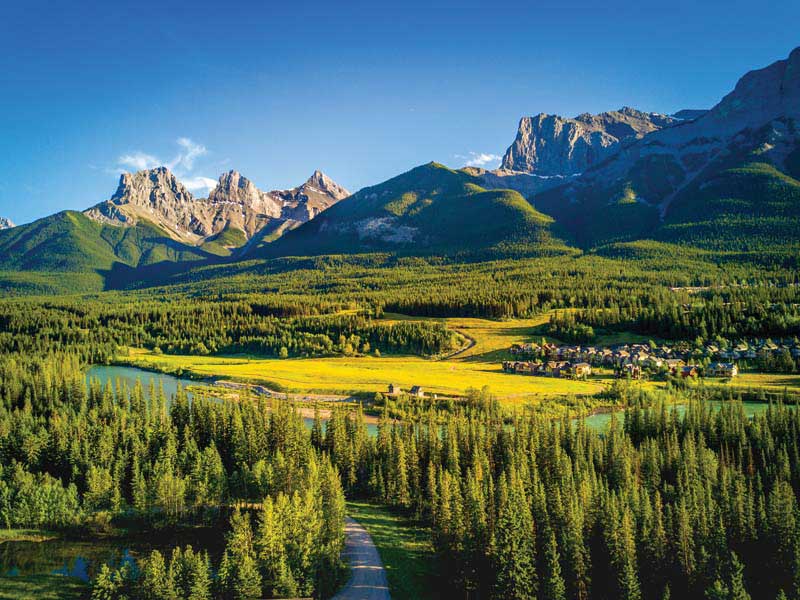
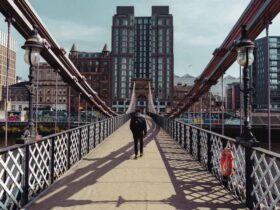
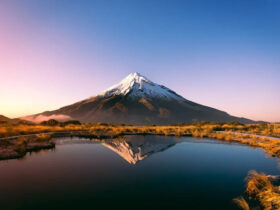
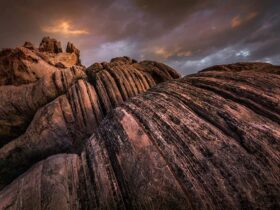
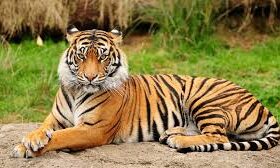
Leave a Review